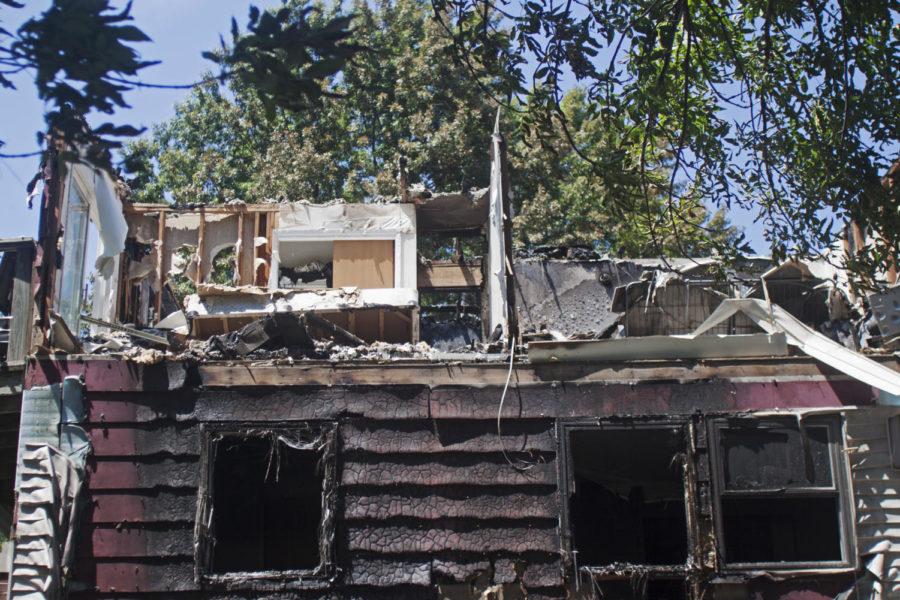Sorting through ashes after a fire
July 19, 2012
At first he did not believe there was actually anything wrong.
It was a quarter after 6 a.m. and Satya Mohan Vamsi Andalam was asleep with his wife when they heard a loud knocking on the door.
“My wife and I were sleeping and we heard this loud knock on the door,” said Andalam, graduate in electrical and computer engineering. “This guy was in a panic and was saying there was smoke. We didn’t think there was actually anything wrong. We thought maybe someone had burned something while making some food. There were no smoke alarms so we didn’t really think anything of it.”
Andalam and his wife grabbed only their cellphones, leaving behind everything else, including their documents and passports from India.
“We came outside and saw that there was actually fire at the farther side,” Andalam said. “As we got closer to where the fire was, I remember just thinking, ‘Oh my God.’ It looked like it was a small fire though, so we thought surely the firefighters would get it out soon. We just felt guilty that we hadn’t thought to grab our documents.”
As the hour progressed, the fire progressed as well, even more quickly than before. This was due to the lack of firestops, according to Fire Captain Richard Higgins.
According to the National Insulation Association, firestops “are products specifically designed to stop smoke, toxic fumes, super-heated gases and fire from migrating from one room to another or from one floor to another. Firestops are used to restore the entire structure, via each individually penetrated partition, to its original fire-rated integrity.”
Higgins said because of the lack of firestops, the fire was able to spread much more quickly through the building than it normally would have.
“The fire started down below in the parking garage underneath,” Higgins said. “There are no doors on the garage, so the fire came out of the garage and worked up the vinyl siding and got into the overhang of the roof. Once it got up into the attic, the attic doesn’t have what is called a firestop or actually a draft stop. So there’s no drywall or anything to keep it running the distance of the attic around all three sections of the building. So what we try and do is we try and get ahead of where the fire is at and just with there being no fire stops in there, that made it difficult for us to stop that fire itself.”
Approximately 38 firefighters were at the scene fighting the fire, Higgins said, which is more than usual.
“We got as many firefighters there as we could,” Higgins said. “That’s not typical for a fire to have that many. It was a large fire so we had as many people back there working.”
While many residents discovered their belongings were completely destroyed, Andalam and his wife, who lived in an apartment on the upper floor near where the fire created the most damage, were fortunate to find their documents were salvageable.
“We kept our documents in our closet near the top,” Andalam said. “Fortunately, only the ceiling was destroyed on our closet. Things in our apartment like our wooden furniture were destroyed by the fire and our electronics were unable to be salvaged, but the important things were OK. So we were really happy.”
In the days since the fire, Andalam and his wife have been staying with friends.
“The emotional support from friends has helped a lot,” Andalam said. “Now I’ll be looking to finish up my thesis for my Ph.D. My laptop is destroyed so I’ll be trying to get back my work. I’ll also be looking for a job. I’m sure I can get a job, especially since I have my documents.”

















